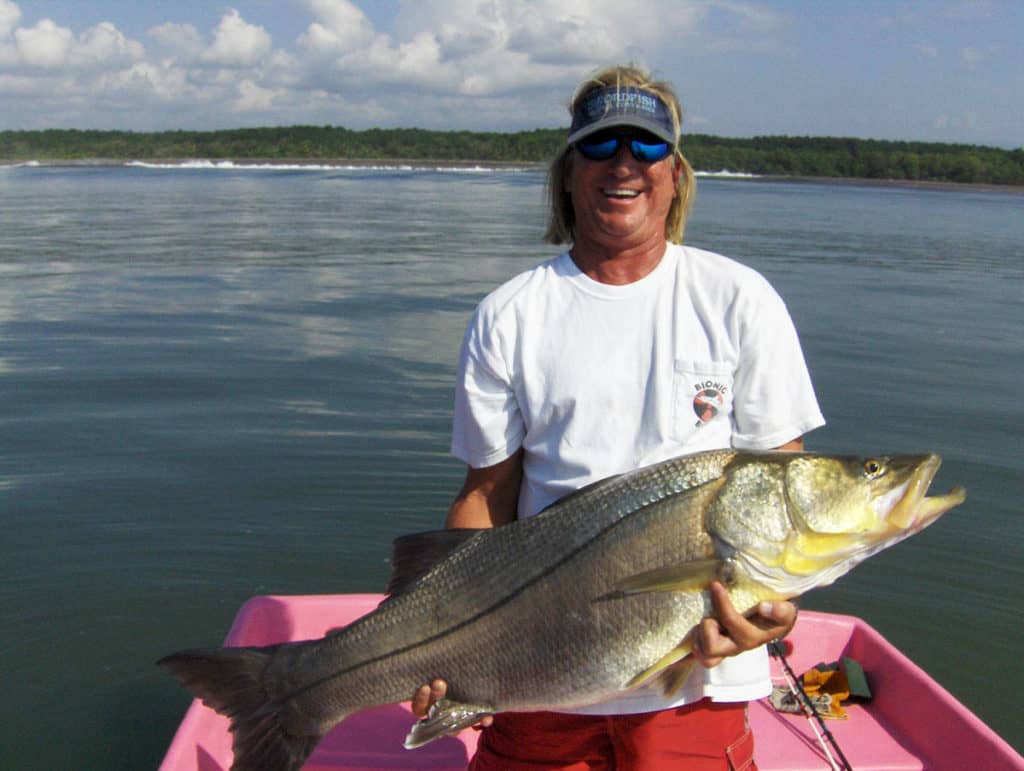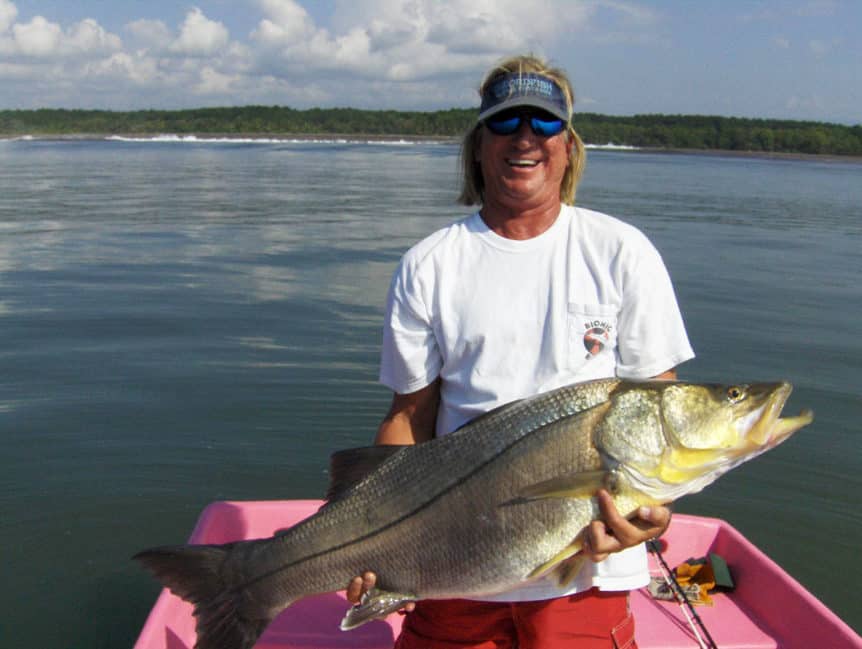
Imagine standing knee-deep in a Costa Rican River mouth, the Pacific crashing nearby, reeling in a snook that’s putting up a fight like it’s auditioning for a action movie. That’s the magic of snook fishing in Costa Rica—a thrill that hooked me years ago and keeps anglers coming back.
I owe my love for this sport to Bill Barnes, a legendary figure in Costa Rica’s fishing scene who showed me the ropes. Snook are special here: they glide between salt and fresh waters like it’s no big deal, outsmart you with their cunning, and taste like heaven when they hit the pan.
Whether you’re a newbie or a seasoned rod-bender, snook fishing in Costa Rica offers endless possibilities. Let’s dive into the when, where, and how of chasing these beauties.
When to Cast for Snook: Seasons That Sizzle
The beauty of snook fishing in Costa Rica? You can do it year-round if you know where to look. That said, timing your trip can up your odds of landing a monster. On the Pacific side, big snook swarm river mouths from April through May, their numbers peaking as warm weather settles in.
Come August to October, Central Valley rains swell rivers like the Colorado, flushing logs and leaves downstream and setting the stage for epic shore fishing—think 20-pounders, with 30- or 40-pound bruisers not uncommon. From late November to January, the “calba” (Fat Snook) run hits, a light-tackle frenzy where these feisty little guys (up to 13 lbs) swarm the coast.
Over on the Caribbean, snook sync up with tarpon season—January to June and September to October—making river mouths like Barra del Colorado a double-threat hotspot. Even off-peak, a shifting barometer might surprise you; some of my best hauls came on “meh” days.
Where Snook Rule: Costa Rica’s Hotspots
Costa Rica’s got 12 snook species—six on the Pacific, six on the Caribbean—and they’re everywhere from surf to jungle creeks. On the Pacific, the Central coast shines with rivers like Tivives, Damas, and Savegre pumping out giants over 40 lbs. Down south, Drake Bay’s a snook playground, especially at high tide when river and ocean waters mix—fish alongside locals for insider vibes.
The Caribbean’s no slouch either: Barra del Colorado and Tortuguero are legendary, with the world-record Common Snook (53 lbs 10 oz) snagged off this coast. Freshwater fans should hit Caño Negro, a breeding ground where snook thrive miles inland. Whether you’re trolling a panga or casting from shore, these spots deliver.
How to Hook a Snook: Tackle and Tricks
Snook aren’t rocket science, but they’re crafty—fooling them takes finesse. On the Pacific, river mouths are your sweet spot. At Drake Bay, work cover changes during high tide with a 6- to 7-foot spinning rod and 10–20 lb test line—light enough to cast all day without aching.
Reels need 150–200 yards of line and a smooth drag to handle their runs. Live bait’s king (mullet, sardines), but if you’re sans cast net, trade hooks or jigs with locals or go artificial—bucktail jigs, spoons, or swimbaits in ¾ oz do the trick. Inside rivers, 5- to 6-foot plug rods shine; in the surf, stretch to 7 feet. No need for U.S.-style long rods—standard spinning or baitcasting gear works fine.
Caribbean snook love a slow troll with bright lures near river mouths, especially on a falling tide, or a fly cast into mangroves if you’re feeling fancy. Sodium-sensitive and ambush-driven, they’ll pounce on shrimp or small fish drifting by. Here’s a quick tackle cheat sheet:
| Location | Rod | Line | Bait/Lure | Best Tide |
|---|---|---|---|---|
| Pacific Surf | 6–7 ft, medium | 10–20 lb | Jigs, live mullet | High |
| Pacific Rivers | 5–6 ft, plug | 12–17 lb | Spoons, swimbaits | Falling |
| Caribbean Mouths | 7 ft, medium-heavy | 15–30 lb | Trolled lures, flies | Falling |
Why Snook Are Worth It
Snook aren’t just a catch—they’re an experience. Their knack for fresh-to-salt hops means you might hook one in a lagoon one day and a breakers the next. They’re smart, demanding you read the water and tweak your approach, and when you win, the reward’s a flaky, white feast rivaling snapper.
Costa Rica’s held world records—like the 57-lb Black Snook from the Pacific—and big ones still lurk. Last trip, I watched a buddy wrestle a 35-pounder from the Savegre, grinning like a kid. Whether you’re after the fight or the fry, snook deliver.
Reel It In: Your Snook Adventure Awaits
From the Pacific’s wild rivers to the Caribbean’s lush estuaries, snook fishing in Costa Rica is a blast any time of year. April–May and August–October are gold on the Pacific; November–January bring the calba rush; and the Caribbean peaks with tarpon season. Armed with the right gear and a little patience, you’ll tap into what hooked me decades ago—thanks, Bill. Ready to chase your own trophy? Pack your rod, hit those river mouths, and let Costa Rica’s snook show you what they’re made of.

